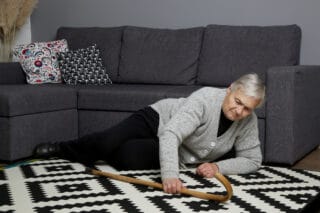
La Plata Physical Therapy, Inc.
101 Centennial Street
Suite C
La Plata, MD 20646
Wellness Center
103 Centennial Street
Suite A
La Plata, MD 20646

More Physical Therapy Articles
Fall Prevention In Parkinson’s Patients

Parkinson’s disease (PD) is a widespread neuromuscular condition which manifests itself in ways that vary depending on the individual, however it is characterized by both motor and non-motor features. Mobility and gait disturbances are a particularly common impairment for sufferers, often leading to balance deficiencies and an increased fall risk. Falls within the Parkinson’s population are frequent and recurrent with 45-68% of people falling annually and two-thirds falling recurrently. The consequences of falling for this group are often devastating resulting in injury, reduced independence, fear of falling and a significantly reduced quality of life. With the incidence of Parkinson’s increasing with age alongside the risk of fall-related fractures, gait and balance rehabilitation is an ongoing focus for physical therapists worldwide.
The movement disorders experienced by these patients often cannot be equated to one single factor, but are influenced by a “combination of age-related changes, such as decreased muscle strength, impaired balance, and lower visual acuity, as well as disease-related issues”. Pathological changes occur within the brain and lead to “increased variability and asymmetry, poor postural control, bradykinesia, rigidity, and freezing of gait”. With some literature listing over 30 varied risk factors, positive treatment plans can be categorized by two broad methods; exercise-based interventions and pharma-based interventions.
A patient’s medical history can be used to identify an individual’s absolute risk of falling, placing subjects into high-, medium- and low-risk groups. As these three groups are quite general, it is critical to understand the underlying factors that cause one to be placed into each one of these groups. From here an effective, tailored rehabilitation plan can be devised for the individual.
From a review of four trials comparing exercise rehabilitation to a non-intervention control group, each trial displayed a reduction in fall rates with significant improvements related to Thai Chi and another trial that “delivered exercises to improve muscle strength and movement strategies.” As stated previously, disease severity is an important indicator to the success of an exercise program. One report listed a 69% reduction in falls in contrast to a 61% increase in falls in individuals with a higher disease severity, consolidating consistent findings with previously published studies.
Approaching fall prevention in PD is multi-faceted and is influenced by a wide range of variables. With such a variation in symptom presentation between individuals, there is no catch-all approach. This emphasizes the need for a holistic, multi-disciplinary approach with a focus on exercise provision and pharmacological intervention.


















